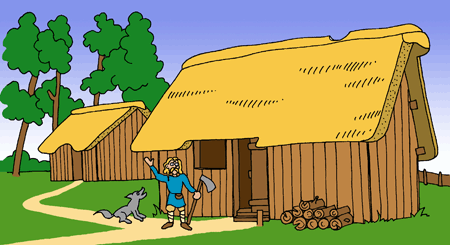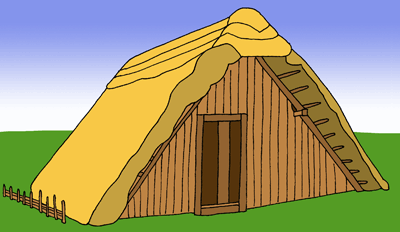|

|
|

Homes for Ordinary
People in the Dark Ages

- Ordinary Saxons usually
lived in small villages. These would be made up of about four or five farms.
- The farm houses were rectangular
and made of
wooden planks. The roofs were thatched
with reeds or straw.
- They had only one floor, but
some had a gallery too. There was sometimes more than one room.
- They built smaller buildings too.
They were built over a rectangular hole dug in the ground. They
are called 'Grub Huts'. Some seem to have had wooden floorboards over the
hole (to stop rot & create a cellar?).
While others had steps down into the hole. There would be two or
three grub buts associated with each farm house. They were probably
used as:
- Archaeologists have dug up the
remains of several Saxon villages. The picture is of one found at West
Stow in Suffolk. It has been rebuilt and you can visit it.
- There were hearths inside where
the people could make a fire to cook on and to keep them warm.
- Ordinary people probably didn't
have much furniture.
- They kept their animals near the
house. They grew crops nearby.
- Although everyone farmed, some
people in the village also had other
special skills.
- Some ordinary Saxons lived in
similar buildings near the 'great halls' of their lord or
king.
- When buildings became old, the
Saxons would move out and build new ones next to them. Over time, the
whole village would move from its original site.
- Activity
Sheet
available.

|

